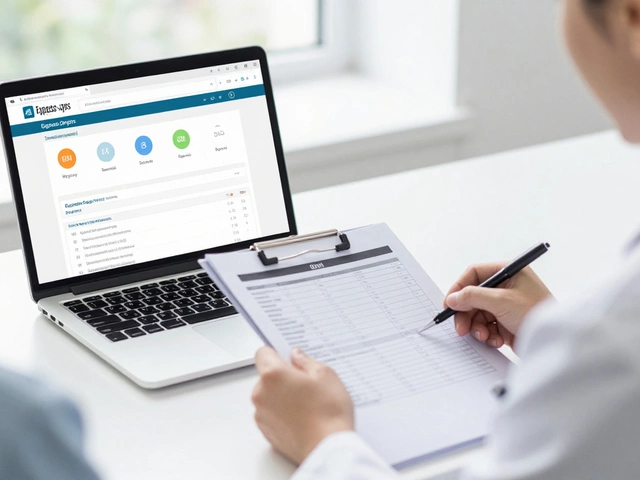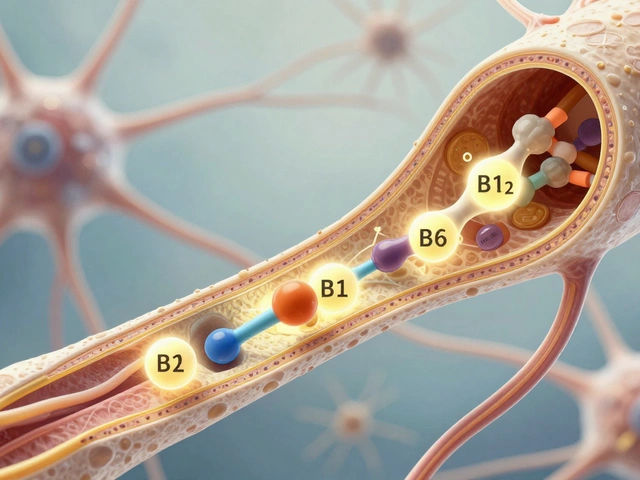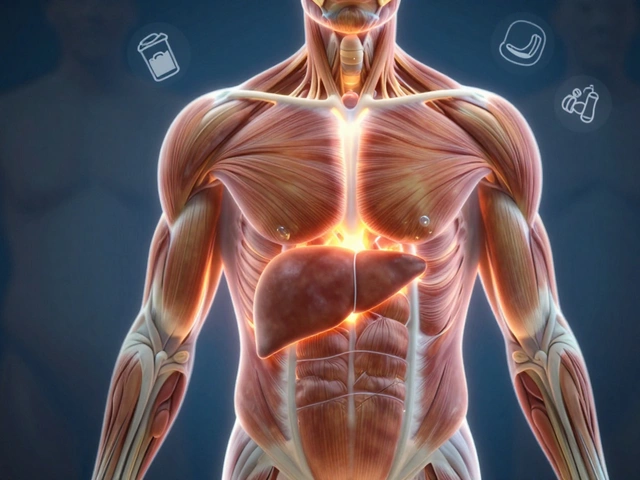Sick of metformin side effects? You're far from alone. Whether it’s stomach upset or just not getting the results you need, a lot of people with type 2 diabetes end up looking for something else. The good news? Doctors have way more options up their sleeves these days.
A decade ago, your choices were pretty slim. Today, there’s a whole menu of meds that can tackle blood sugar from a bunch of angles—some even help with weight loss or protect the heart. This isn’t just hype. Many doctors are shifting how they treat diabetes, especially for folks who can’t handle metformin or need more help getting their numbers down.
Ready to sort out what’s what and see how the new drugs stack up? This is your practical guide to what doctors are actually prescribing instead of metformin—and why. If you've been wondering about your options, or you’re gearing up to ask your doctor about a switch, keep reading. There are some surprising and even promising choices in the mix now.
- Why Metformin Isn’t Always Used
- SGLT2 Inhibitors: The New Kid on the Block
- GLP-1 Receptor Agonists: More Than Just Blood Sugar Control
- DPP-4 Inhibitors: A Gentler Approach
- Older Alternatives Still Going Strong
- When Lifestyle Changes Matter Most
Why Metformin Isn’t Always Used
Metformin is usually the first thing doctors prescribe for type 2 diabetes, and for good reason. It’s cheap, most people tolerate it, and it does a solid job of lowering blood sugar. But it’s definitely not perfect for everyone. About 1 out of 4 folks who start metformin end up needing something else, according to a 2021 review in the journal Diabetes Therapy.
The main headache? Gut problems. Upset stomach, diarrhea, and even nausea are super common, especially when folks first start taking the drug or the dose goes up. Some people just can’t get used to it, no matter what tricks they try (like taking it with food or using an extended-release version).
Other reasons doctors might steer clear of metformin include:
- Kidney Problems: Metformin is cleared by the kidneys. If kidney function dips too low (those with a GFR under 30), doctors usually say no-go because of a rare but serious risk called lactic acidosis.
- Liver Issues: People with severe liver disease are also at risk for dangerous acid buildup, so metformin’s off the table for them.
- Heart Failure: Although the thinking around this is shifting, some doctors still avoid metformin in severe cases of heart failure.
- Side effects just won’t quit: If the stomach trouble lasts more than a month and messes with daily life, it’s often time for a switch.
Check out the numbers—it’s not just a rare thing:
| Reason for Stopping Metformin | How Common |
|---|---|
| Ongoing stomach issues | Up to 10% of patients |
| Kidney problems | About 15% among older adults |
| Liver issues | Less common (under 5%) |
So, if metformin alternatives are on the table, know that it’s not just you. Your doctor isn’t making it up—there are real, documented reasons for swapping it out. Good thing there are better choices now than ever before.
SGLT2 Inhibitors: The New Kid on the Block
Heard of SGLT2 inhibitors? Don’t worry if you haven’t—these drugs are a pretty fresh option in the world of diabetes medication, but doctors are reaching for them more and more, especially when metformin alternatives are needed. The names tend to end in '-gliflozin'—think canagliflozin (Invokana), dapagliflozin (Farxiga), and empagliflozin (Jardiance).
These meds work in a totally different way from metformin. Instead of messing with insulin or how your body handles sugar, they tell your kidneys to pee out extra glucose. Yes—literally flushing sugar away through your urine. It’s a smart approach and helps with blood sugar control while also dropping a bit of weight for many folks.
There’s more good news if your doctor has mentioned heart or kidney problems. Studies show that SGLT2 inhibitors can actually help protect your heart and slow down kidney trouble—not something you get from every diabetes drug.
Here’s a real-world look at what these meds can do:
| Drug Name | Average HbA1c Reduction | Weight Change | Heart/Kidney Protection |
|---|---|---|---|
| Canagliflozin | 0.7% - 1% | -2 to -3 kg | Yes |
| Dapagliflozin | 0.5% - 0.8% | -2 kg | Yes |
| Empagliflozin | 0.7% - 1% | -2.5 kg | Yes |
Every good thing comes with a catch, right? SGLT2 inhibitors can make you pee more often, and some people get urinary tract infections or yeast infections. There’s also a rare but serious risk of something called ketoacidosis—so if you start feeling weirdly sick, always give your doctor a heads up. Most insurance plans cover at least one of these meds, but they can be pricier than older options.
If you need a step up from metformin or just can’t use it, SGLT2 inhibitors give you and your doctor more flexibility. Don’t be shy—ask about them during your next visit if this sounds like it could fit your situation.
GLP-1 Receptor Agonists: More Than Just Blood Sugar Control
If your doctor brings up GLP-1 receptor agonists, they’re not just talking about diabetes medication. These meds work differently than metformin. Drugs like semaglutide (Ozempic, Wegovy), liraglutide (Victoza, Saxenda), and dulaglutide (Trulicity) act a lot like a gut hormone called GLP-1. They tell your body to release insulin when you need it, and they also slow down how quickly your stomach empties. The bonus? Many people lose weight without even trying—that’s a pretty nice side effect if you ask most people with type 2 diabetes.
Here’s something wild: some GLP-1s are now even FDA-approved for weight loss alone, not just diabetes. Also, there’s serious evidence that these meds help protect your heart. A 2023 study found people taking semaglutide had a nearly 26% lower risk of major heart problems compared to placebo. So if you have heart issues—or want to prevent them—GLP-1s can be a win-win.
- Usually taken as a weekly or daily shot (don’t worry, the needles are tiny now)
- Lower risk of low blood sugar compared to older diabetes drugs
- May help lower blood pressure and cholesterol in some folks
Side effects can happen, mostly stomach stuff like nausea or sometimes diarrhea, but these usually get better with time. You also want to keep these meds out of reach of pets (yes, even dogs have gotten into trouble with GLP-1 pens left out).
GLP-1s aren’t for everyone. They tend to be pricey and insurance doesn’t always play nice. Still, if metformin alternatives are your goal, and weight or heart health is on your mind, it’s worth a chat with your doctor about these options. More and more people are switching over because the results can be genuinely life-changing.
| GLP-1 Drug | How Often | Main Benefits |
|---|---|---|
| Ozempic | Weekly injection | Blood sugar, weight loss, heart protection |
| Wegovy | Weekly injection | Significant weight loss |
| Victoza | Once daily injection | Blood sugar, some weight loss |
| Trulicity | Weekly injection | Blood sugar, some heart benefits |
Bottom line—if metformin’s not working for you, GLP-1 receptor agonists are definitely raising the bar.

DPP-4 Inhibitors: A Gentler Approach
If you’ve tried metformin but can’t handle the stomach issues, DPP-4 inhibitors might be on your doctor’s radar. These pills work by blocking an enzyme called DPP-4, which helps boost the levels of insulin after you eat. It’s a bit like giving your body an extra push to handle blood sugar, but in a much milder way than some older diabetes meds.
The main names you’ll hear are sitagliptin (Januvia), saxagliptin (Onglyza), linagliptin (Tradjenta), and alogliptin (Nesina). The cool thing is they usually don’t cause hypoglycemia (low blood sugar) on their own, which is a big relief for anyone who’s tired of being on that rollercoaster.
What people notice most is how easy they are to take. One pill a day, almost no food drama, and most folks don’t report weight gain—something that bugs a lot of people on other diabetes medication. For anyone older or juggling a bunch of prescriptions, that simplicity matters a lot.
Here’s a quick rundown of how the main DPP-4 inhibitors stack up:
| Medication Name | Common Brand | Dose (mg/day) | Main Side Effects |
|---|---|---|---|
| Sitagliptin | Januvia | 100 | Runny nose, headache |
| Saxagliptin | Onglyza | 5 | Upper respiratory symptoms, possible risk of heart failure |
| Linagliptin | Tradjenta | 5 | Joint pain, rare allergic reactions |
| Alogliptin | Nesina | 25 | Headache, cold-like symptoms |
DPP-4s work best for folks whose blood sugar is just a bit high or for those wanting to avoid extra side effects. They’re safe to combine with other drugs, too—like insulin or non-metformin drugs from the list of new options.
One thing to keep in mind: these aren’t miracle pills. If your A1C is really high, DPP-4 inhibitors alone probably won’t cut it. But if you want something gentle that fits easily into everyday life and keeps your numbers steady, they’re worth asking your doctor about.
Older Alternatives Still Going Strong
Let’s not forget the OGs of diabetes medication—they’ve been holding it down for years, even if there’s all this buzz about new drugs. If you can’t take metformin or just aren’t getting what you need from it, some of the classic meds still make sense. Doctors still prescribe these, especially when insurance or cost gets in the way of the fancier new stuff.
One big name here: sulfonylureas. You might know them by brands like glipizide (Glucotrol), glyburide (Micronase), or glimepiride (Amaryl). These meds crank up your pancreas to pump out more insulin. They work fast, drop blood sugar pretty well, and they’re cheap. The catch? There’s a risk of low blood sugar, and sometimes people end up gaining a bit of weight. Still, millions use them without any big issues.
Another older option: thiazolidinediones—usually called TZDs. Drugs like pioglitazone (Actos) and rosiglitazone (Avandia) help your body use insulin better. They don’t cause low blood sugar so often, but you’ve gotta watch out for weight gain and swelling. Doctors are careful with these, especially if you have heart or liver problems, but they can be a good add-on if you need a second line of defense.
Let’s check how these compare in the real world:
| Drug Type | How It Works | Main Benefit | Biggest Drawback |
|---|---|---|---|
| Sulfonylureas | Boosts insulin from pancreas | Lower cost, quick results | Low blood sugar (hypoglycemia), possible weight gain |
| TZDs | Makes body use insulin better | Low risk of lows, helpful as add-on | Weight gain, may cause swelling |
Doctors often go for these older meds when a patient’s insurance doesn’t cover SGLT2s or GLP-1s. Or sometimes, someone’s just done better with tried-and-true pills for years, so there’s no need to switch.
If you’re looking for a metformin alternative, don’t count these guys out. It’s always worth chatting about the pros and cons with your doctor. Sometimes, simple and familiar beats new and complicated, especially when you’re juggling costs and other health issues.
When Lifestyle Changes Matter Most
Sometimes, skipping pills altogether isn’t just wishful thinking—it’s actually doable for certain people. For folks with newly diagnosed type 2 diabetes or prediabetes, big changes in daily habits can make a massive dent. Doctors often suggest focusing hard on a handful of basics before jumping straight to alternatives for metformin or other diabetes medication.
Getting serious about what you eat, how much you move, and your sleep routine can really shift your blood sugar numbers. A well-known clinical study (called the Diabetes Prevention Program) showed that losing even 5% to 7% of your body weight could slash your risk of getting diabetes by more than half—way better than you might guess, right?
| Lifestyle Change | Impact On Blood Sugar |
|---|---|
| Lose 5-7% body weight | Can reduce diabetes risk by 58% |
| 30 minutes activity a day | Lowers blood sugar spikes and improves insulin sensitivity |
| Less processed carbs | Leads to steadier glucose levels |
Think about these steps if you're hoping to delay, reduce, or even cut out diabetes medication:
- Swap soda and sweet drinks for water or tea. You’ll avoid sugar overload fast.
- Walk after meals—even ten minutes can help flatten blood sugar highs.
- Try cooking more at home. Restaurant and takeout food usually sneak in extra carbs and fats.
- Get at least 7 hours of sleep. Poor sleep can throw off your insulin big time.
- Weigh yourself consistently. Small changes add up, and you want to notice wins early!
Doctors often give lifestyle changes a real shot—usually for about three to six months—before adding non-metformin options like SGLT2 inhibitors or GLP-1 drugs. Even when you do switch meds, sticking with these changes can sometimes mean fewer pills, lower doses, or just feeling way better in your day-to-day life.










